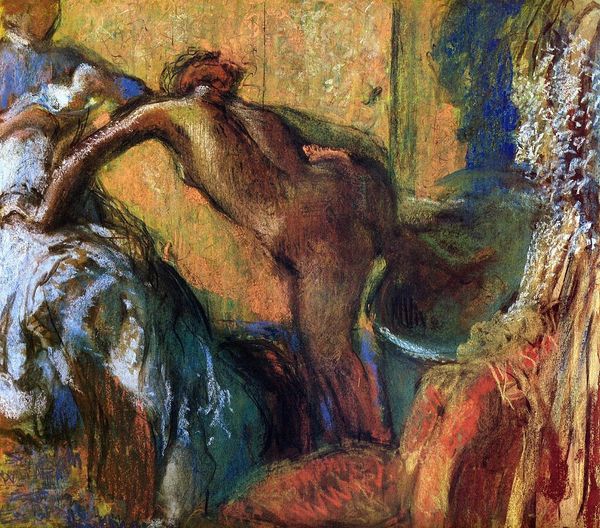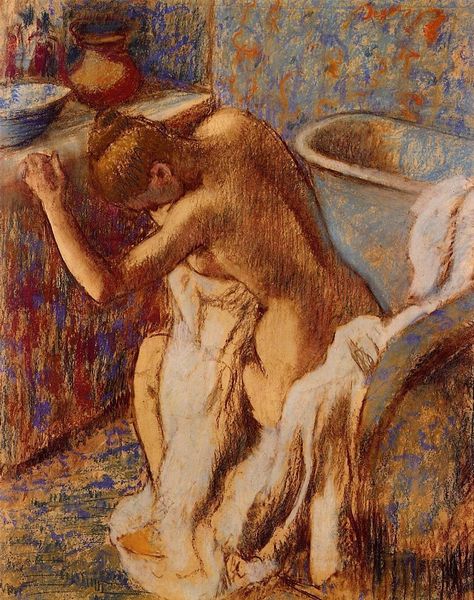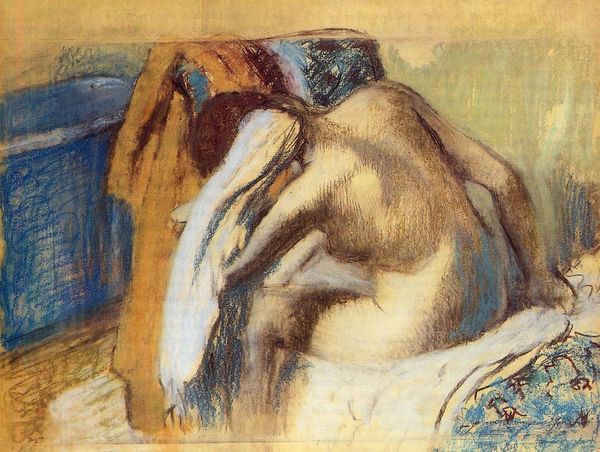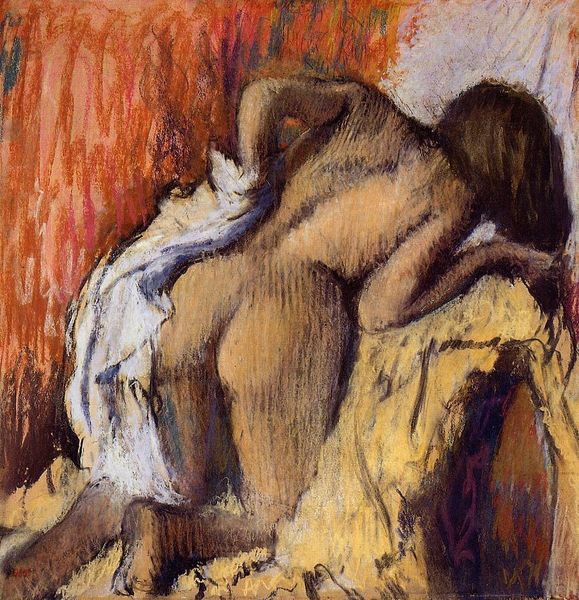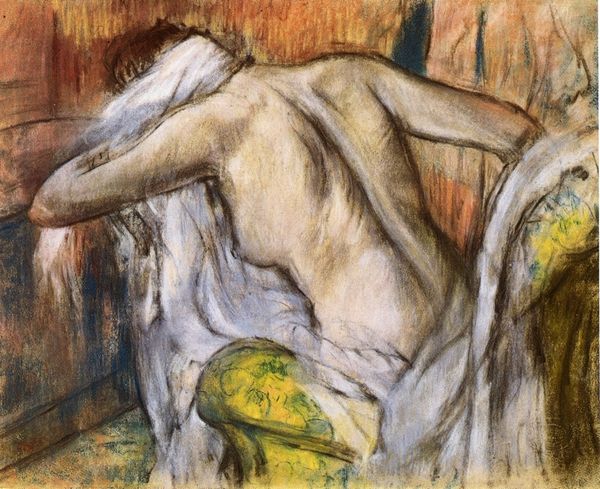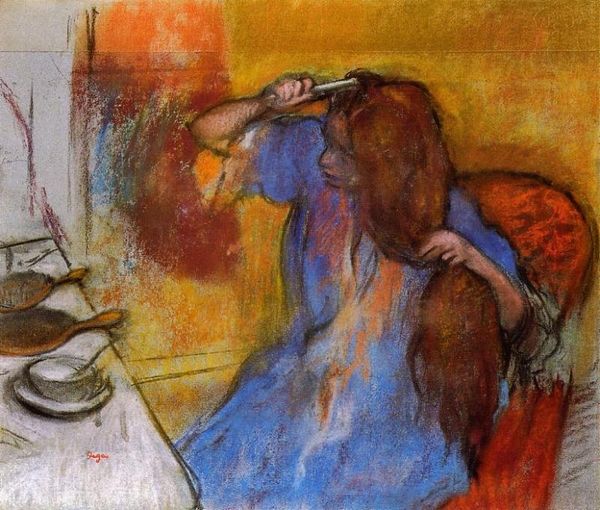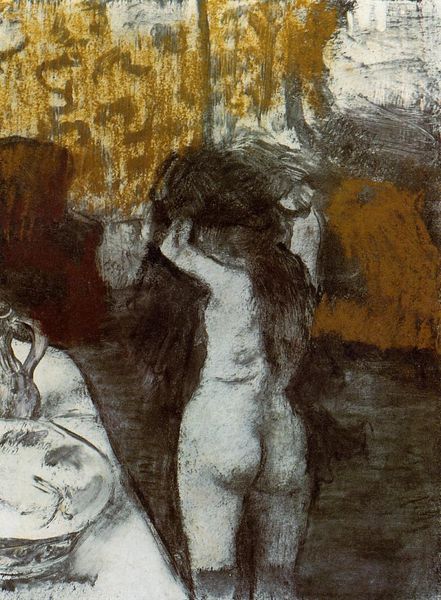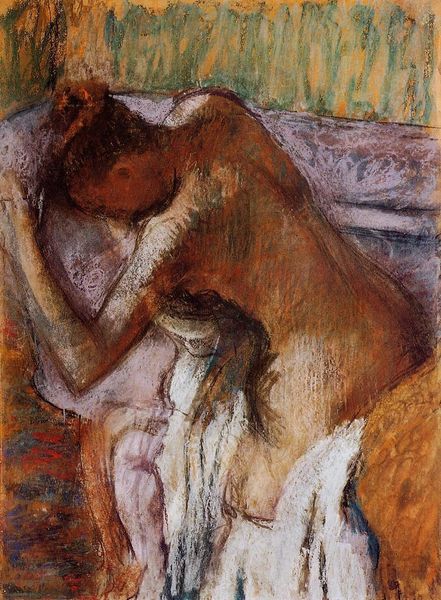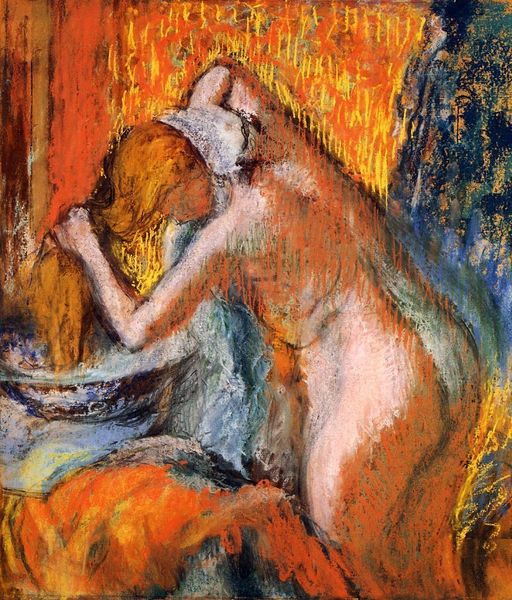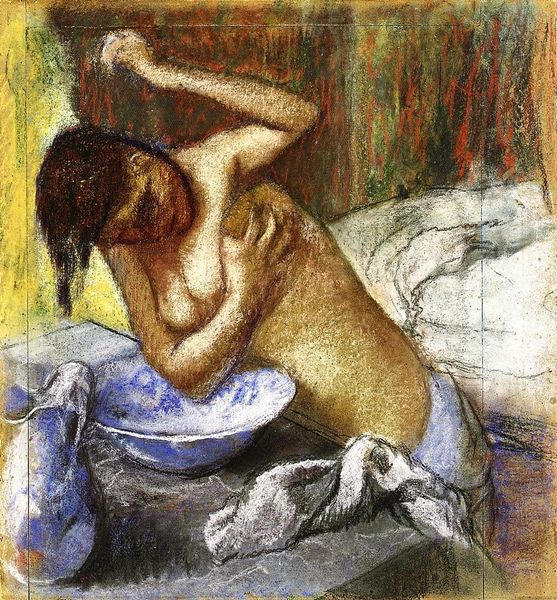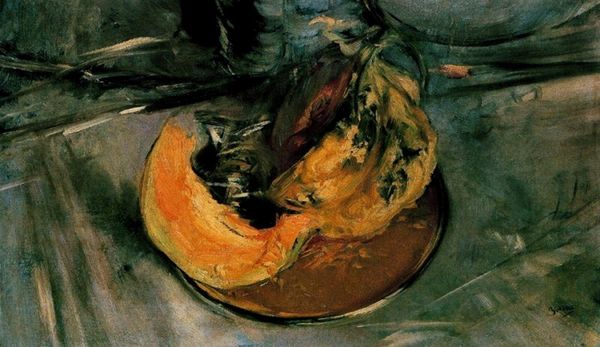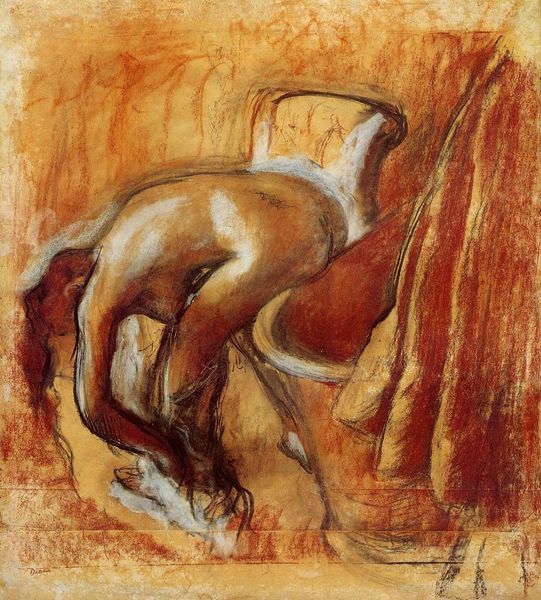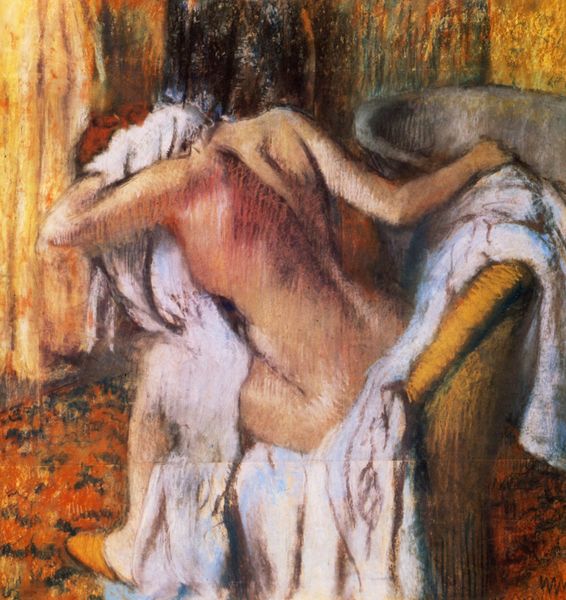
Copyright: Public domain
Curator: Here we have Edgar Degas' pastel on paper, “After Bathing, Woman Drying Her Leg,” created in 1893. Editor: Intimate! And a bit raw. The colours are saturated, that intense orange contrasting with the shadowy blue in such a disquieting way. The composition, with the figure so cropped and off-centre… it's a far cry from your typical idealized nude. Curator: Absolutely. Degas was very deliberate in his material choices here. Pastel lends itself to layering, to building up a sense of depth and texture in ways that other mediums might struggle to replicate. He used it to suggest both form and fleeting light. There's also a cost to pastel work, you know, in the processing and securing the fixative. He chose his tools for the statement and for how that would translate. Editor: And what a statement! This feels like catching a private moment, a glimpse of someone vulnerable and completely unposed. Degas always felt drawn to capturing those everyday acts – the ballet dancers tying their slippers, the laundresses hard at work. He really did capture an honesty. Curator: Degas was fascinated with the female form in motion, removed from the male gaze. But if we think about the historical context, these scenes were often rooted in observing the labor of working-class women and domestic workers—who had little agency, particularly in that moment. Degas never represented wealthy women doing something similar. How can we know the intent? I think he captured that with pastel; the materials feel soft to capture the working class at ease. Editor: Right! Perhaps, what's so poignant here is how Degas transformed the act of bathing, something often associated with purity and ritual cleansing, into a purely practical, functional act, focused more on physical care and mundane realities. And from the work on canvas he clearly went through several considerations. I think the artist made some clear choices there. Curator: You know, thinking about Degas, so attuned to capturing life’s realities, this pastel feels like more than just art to me. There is something deeply moving and present, wouldn’t you agree? Editor: Totally! For me, understanding Degas’s method and materials enriches my experience so deeply. Seeing that material labor connects so potently with this very tender scene just makes me wonder anew.
Comments
No comments
Be the first to comment and join the conversation on the ultimate creative platform.
